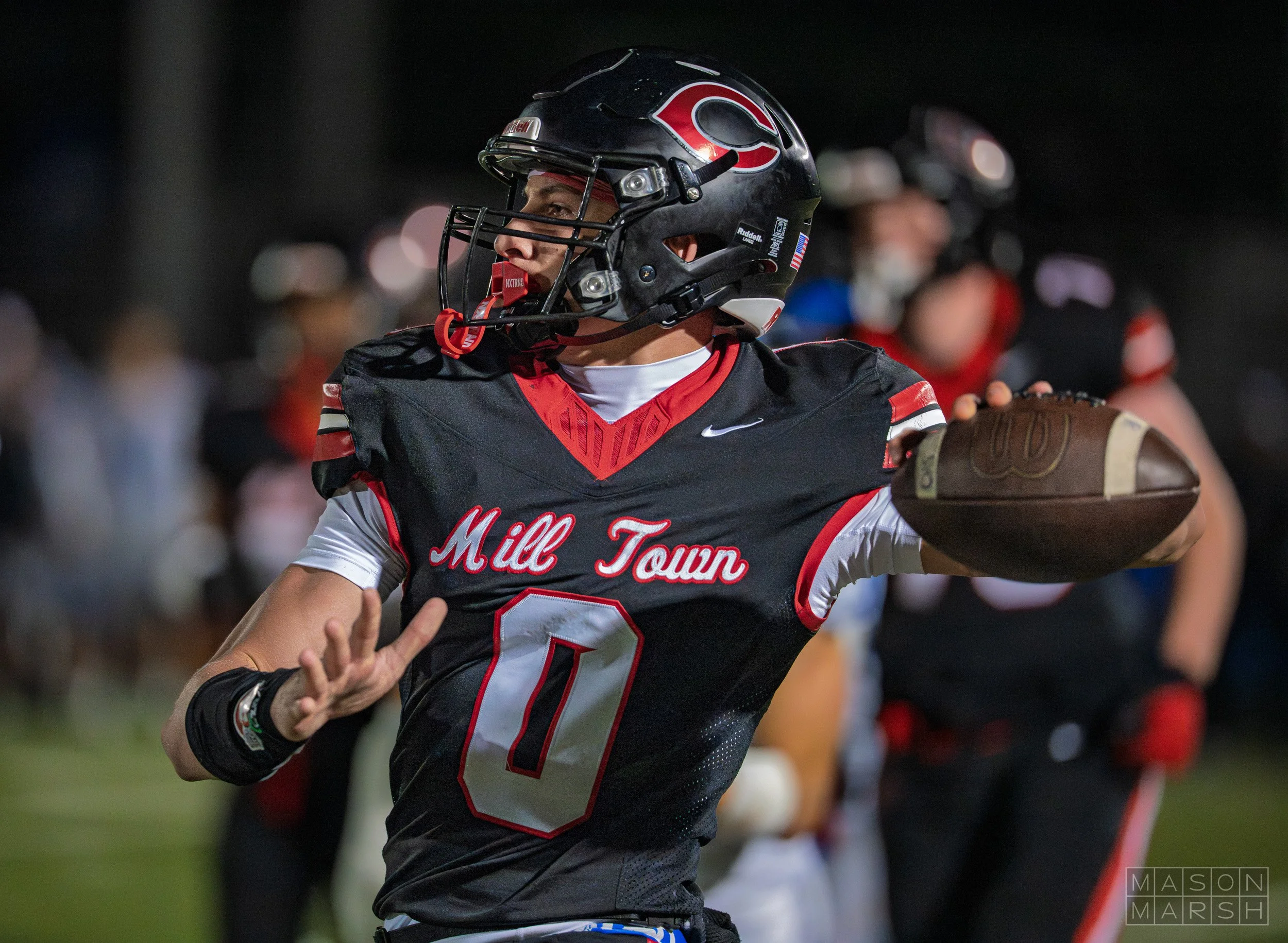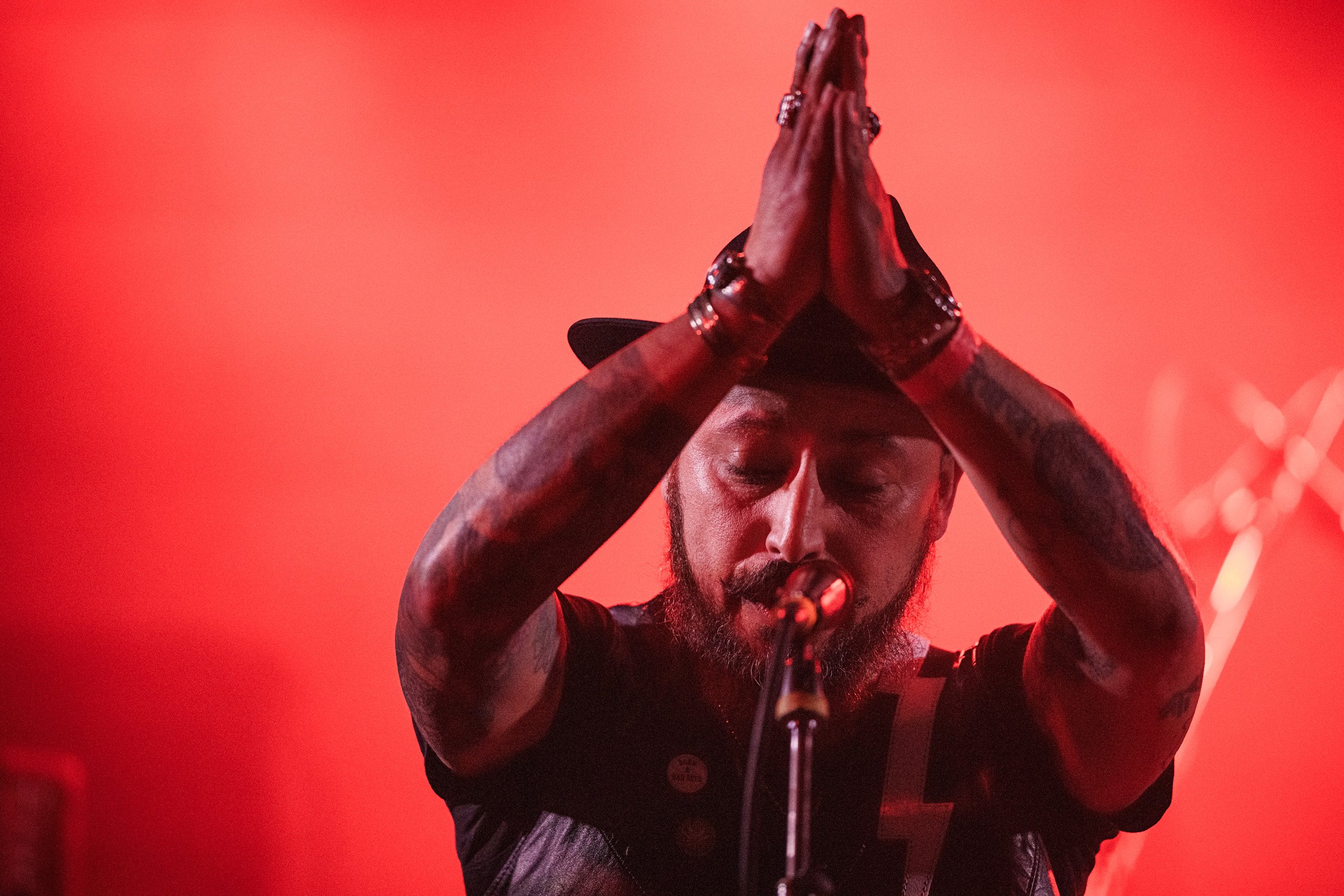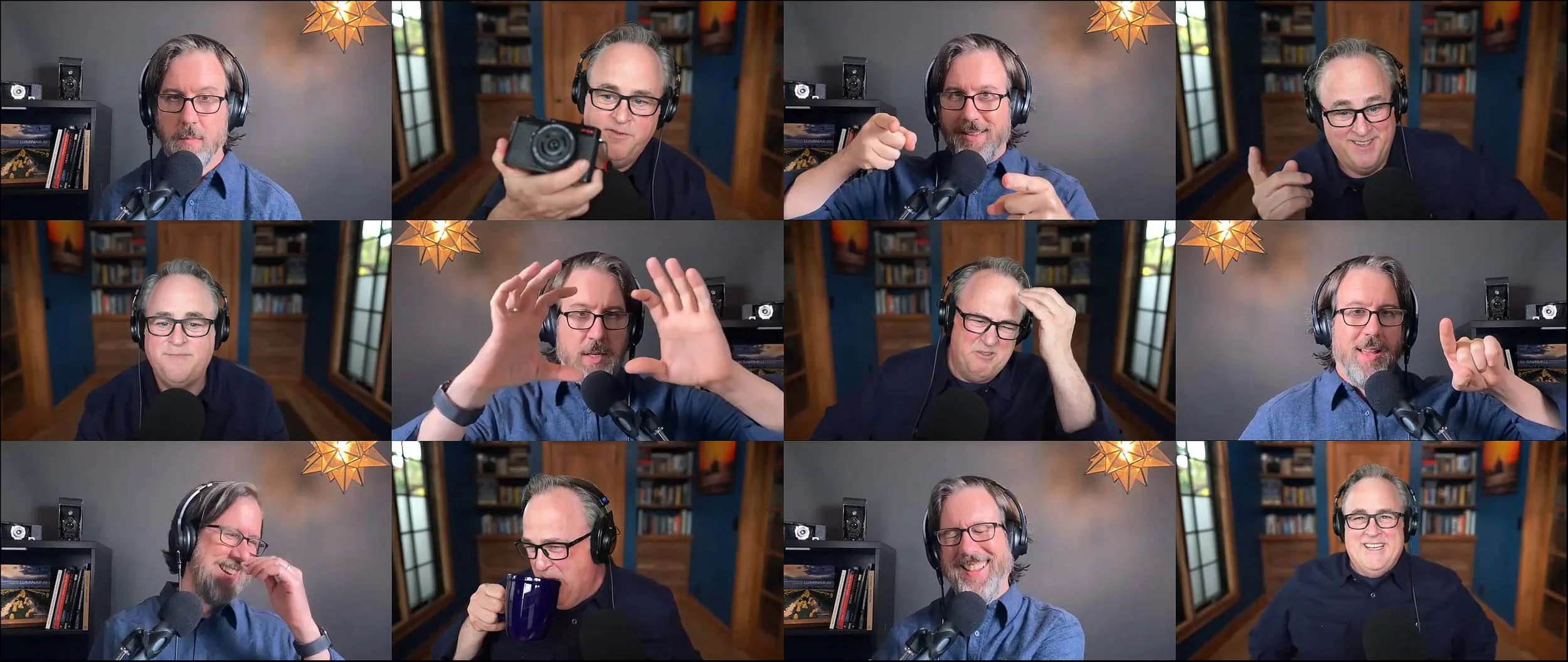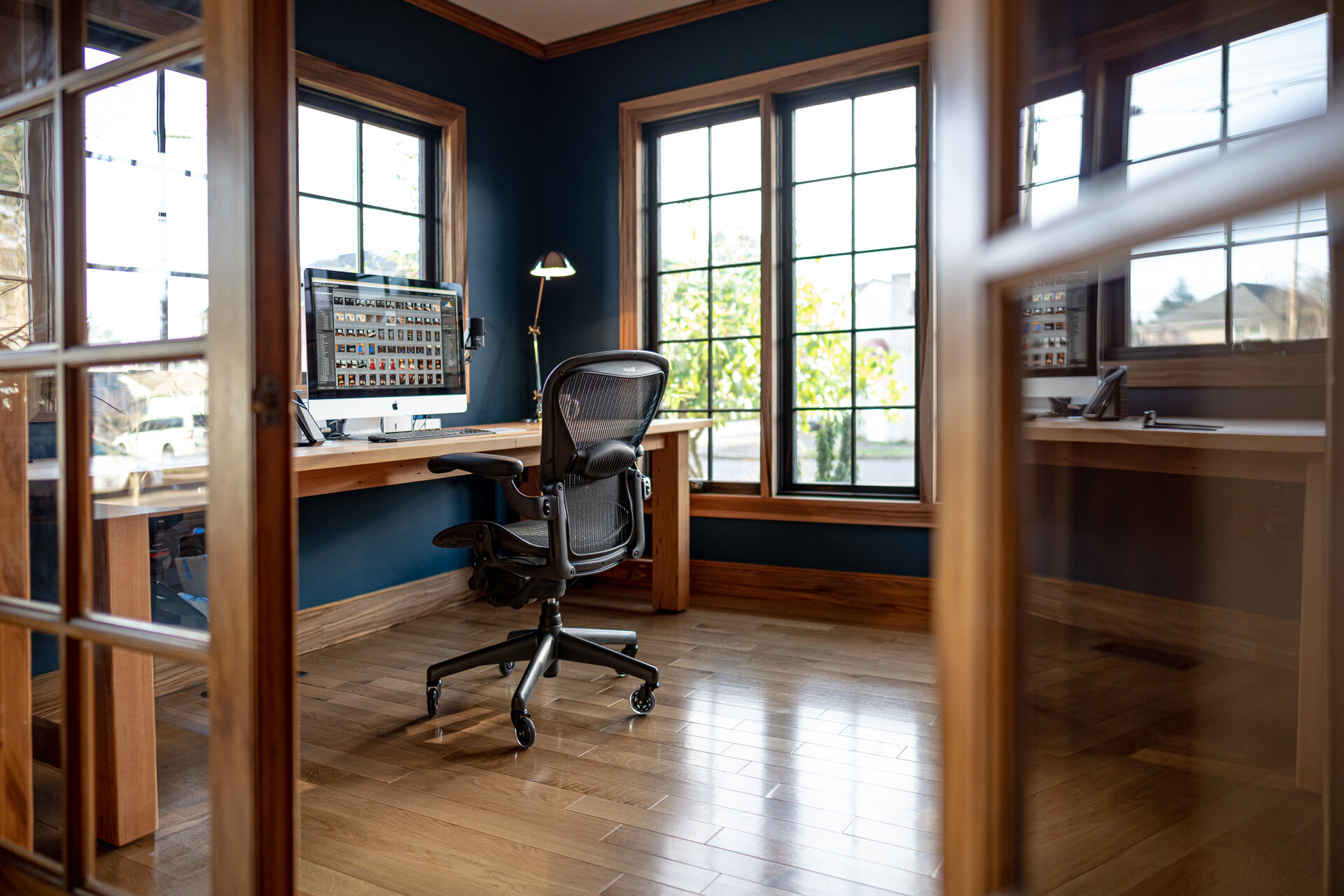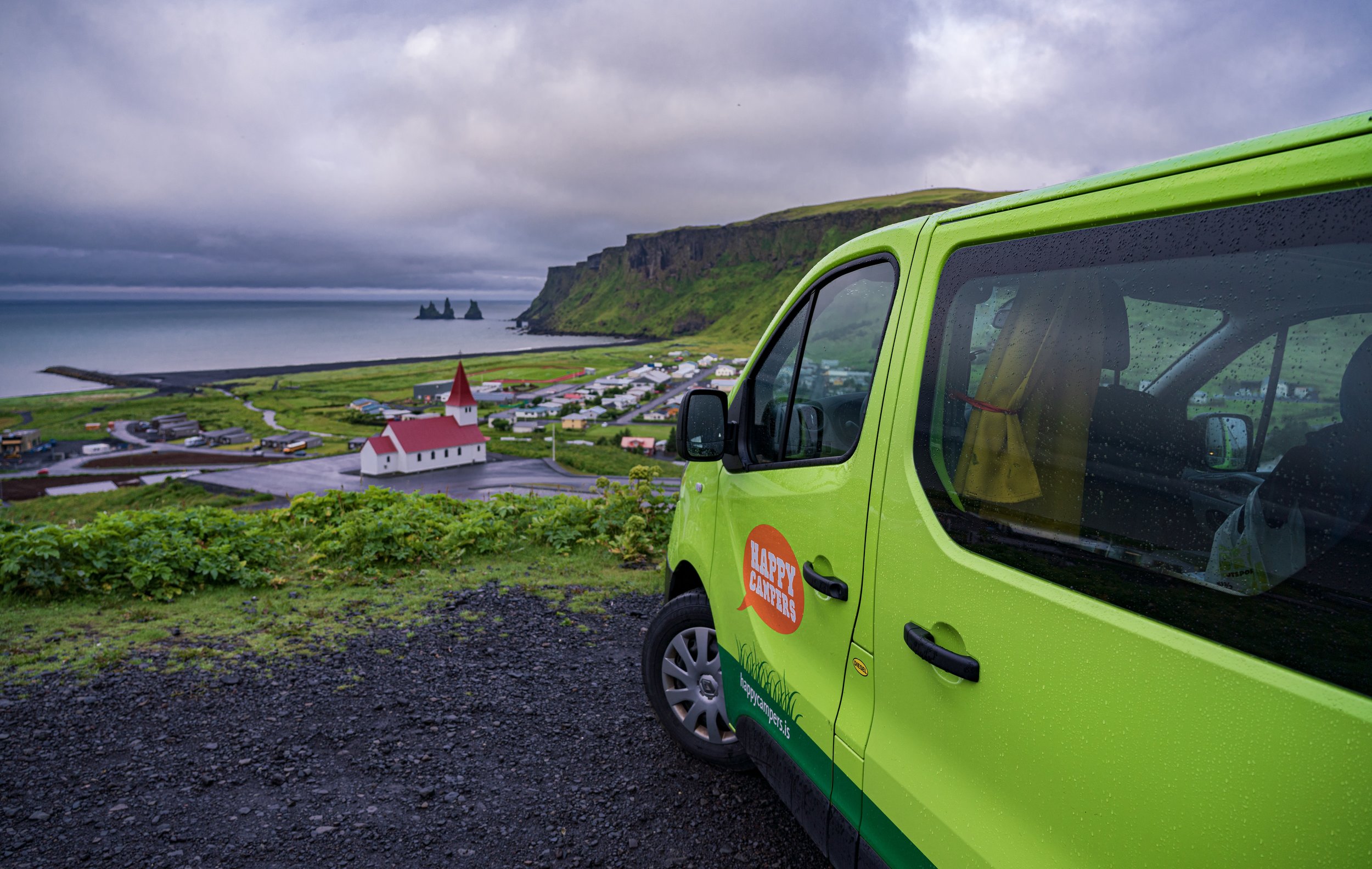YOU DON'T NEED THIS STUFF
Instead of walking the well-worn path of other photographers and penning a list of things to buy this holiday season, I am going to go the other way and offer up a list you can hand out to your loved ones to guide them as they try to find affordable things to give you this year. This is my first annual, "I Don't Wish For This List." Enjoy!
As I type this, I have a couple of emails in my inbox from relatives wondering what they could possibly get me for Christmas that I don't already have. It's a familiar question that I try and answer each year, but as I get older the list of things I need gets shorter and the list of things I want gets pricier. As my own mother so eloquently put it a couple of weeks ago, "I'm not buying you a $1000 lens for Christmas!" Oh, Mom, I don't have any $1000 lenses on my wish list. They are all well over $2000.
So instead of walking the well-worn path of other photographers and penning a list of things to buy this holiday season, I am going to go the other way and offer up a list you can hand out to your loved ones to guide them as they try to find affordable things to give you this year.
This is my first annual, "I Don't Wish For This List." Enjoy!
ACCESSORIES
Most photographer will tell you that they can't have enough accessories, and the ones who say they have enough are clearly lying. There is always something more we can cram into our camera bags that will make our lives easier when we go to make images. The Photography Equipment Industrial Complex knows this and keeps a steady stream of stuff flowing our way. Here are the things you don't want:
#1 - Lens Pens. Before you slag me with comments, know this... I own a Lens Pen. I actually own a couple of them, and they all sit unused in my drawer at home. I know that they have the handy brush and magical black powder lens cleaning pad, but I do not trust that magic dust and I never need the soft little brush. Instead, go with the tried and true single-use Zeiss Lens Wipes, microfiber cloths and wait for it... a shaving brush. Yes, I said a shaving brush. You can get cheap Badger hair bristle shaving brushes on Amazon and they work very well for brushing sand and crap out of the little cracks and crevices of your camera and lenses. A rocket blower will round out your cleaning kit. The Lens Pen is a perfect example of something that seems to good to be true. I have used them and they fall short. The magic dust does help remove oily smudges from your lens, but as you rub away with that little felt pad, you are scouring your expensive multicoated lens element with every speck of sand and dirt that pad has ever picked up. The brush's bristles are way too soft to snag the stuff that lodges in those little seams and cracks of your precious gear. Shaving brush. I know, it's nuts but great things often are.
#2 - Lens Cap Leashes. Good God, those things bug me to the core. You remove your lens cap to use your camera, and now that plastic disc is flapping in the wind. It will spin and slap and clatter around until you pull it off and stuff it into your pocket where it belongs. When you have your camera set up on a tripod shooting anything longer than ¼ of a second and that stupid little cap leash will cause just enough camera shake to dull your image. You may be tempted to blame the lens, or knock the camera. You will think you can't focus. The last thing you will suspect is the $2 elastic loop with the cord attached is trashing your work. Just say no to leashes and please for the love of all that is holy never, ever ask for one.
#3 - Camera Bags. Hang on a minute, am I suggesting that no one get you a camera bag for Christmas? No, not exactly. Camera bags are highly variable in features, fit, quality, and function. If you are asking for a specific, and I mean completely specific, camera bag that is just fine. What you should avoid is the trap of leaving the options open as to which bag you need. Before you get any camera bag you need to put your gear in it and wear it. Most of us own numerous camera bags and one of the reasons is we don't scrutinize the selection of those bags enough. Well-meaning loved ones will listen carefully to the camera store salesperson as they pontificate about the features of bags aplenty. Those salespeople are not you. Good camera stores will have a place for you to load up prospective bags and they shouldn't bat an eye at you wanting to stand around for a while with the bag over your shoulder or on your back. Camera bags are so very important, and their selection is a time-consuming and personal process. Once you have your bag chosen, let your gift buyers know the make, model, size and color your want. Leave no room for chance with this one.
#4 - Filters. Like camera bags, filters are wildly variable. Add to that fact this fact: filters are one of the more profitable items in a camera store. If your beloved wanders into a camera store knowing only that you desire a "polarizer" or a "neutral density" filter, they are at the mercy of the sales staff who will likely smell the blood in the water and send them home with who knows what. As with the camera bags, you need to specify which brand and size of filter you wish for. In almost all cases, online sellers will offer much better prices for filters than stores will. Check the big retailers like B&H, Amazon and Adorama as well as my favorite filter source, 2filter.com.
I prefer these brands: Formatt-Hitech, Lee, B+W, Marumi and Tiffen. Good filters are expensive. Expect UV filters to run more than $40, ND's to go for more than $60 and CPL's to bust $100. Ask for filters sized to fit your largest lens and use step-down rings to cover your other lenses.
#5 - Tripods. For any photographer that enjoys landscape, nature, architecture, macro, or night photography, a tripod is as important as any lens or camera. I've seen so many people on my workshops bring cheap, flimsy tripods to support their precious gear. It's an expensive lesson to learn, but most of us have purchased many tripods before finding the best one for us. Like bags and filters, there is no such thing as the "best" tripod. You need to test and scrutinize each one you are considering before picking one. I have found Gitzo and Really Right Stuff to be the best by far, with Induro, Three Legged Thing and Feisol offering more affordable options that still deliver quality.
CAMERAS & LENSES
I've come a long way in my understanding of cameras and lenses over the years. I am sure I still have a lot to learn, but based on my personal experience, and from watching my workshop participants for the past six years I have some pretty strong opinions on which types of cameras and lenses to not wish for this holiday season. Here they are:
#1 - Bridge Cameras. For many point-and-shoot or iPhone photographers, the next step in their photographic evolution is often a "bridge" camera. These are the all-in-one "Super Zoom" cameras by Canon, Nikon, Pentax, Samsung, Panasonic, and others that sell for less than entry level DSLRs. These cameras are affordable and on paper they have specs that seem to match more expensive cameras. The truth is they suck. That super zoom? Most of the time it is a digital zoom that relies on sensor cropping to pull down those impressive numbers. While these cameras often sport high megapixel counts, those megapixels are crammed onto a tiny little sensor with poor low light performance. The truth is, no one who is serious about photography will be happy with a bridge camera for long. I believe it is much wiser to invest in a mirrorless camera or DSLR and grow into it. If you are someone who is looking to make photographs for more than just a casual hobby, you need to look down the road and select gear that won't hold you back as you grow. The reason they are called bridge cameras is because they are supposed to fill the gap between point and shoot cameras and "serious" cameras like DSLR's. I say jump the gap and skip the bridge.
#2 - Entry Level DSLR's. You can be a rebel, but please don't buy one. As a workshop leader, I have seen many people struggle with their entry-level DSLR's. The problem is never the person, (well, almost never!), but the camera. The engineers at Canon, Nikon and the other big camera companies design DSLR's for professional use that feature durable construction, simple controls, and exceptional image quality and autofocus. When they sit down to design their entry-level cameras, they go the other direction and conjure up cameras of flimsy construction, lousy image quality, and lagging autofocus. Then they attempt to hide their sloppy design work with a thick pile of features that end up making the cameras nearly impossible to control. My Canon 5D Mark III has a small fraction of the menu options of most entry-level DSLR's. No photographer needs in-camera photoshop-like processing features like fisheye filters and banner text saying "Happy Birthday!" No photographer should have to fight a camera to control it manually. Gone are the days of the Pentax K-1000 mentality which was, "hey, these people are learning this stuff, so let's make it simple and reliable." Now it's all bells and whistles and every time some poor Rebel shooter hands me their camera in frustration I want to cast it into the sea. If you are serious about photography, you don't need to go out and buy, (or ask for), a Nikon D4s some other hulking pro camera. You have loads of great options in the mirrorless market with cameras like the Fuji X series cameras and the Sony A7 series units. If you desire a DSLR, consider the mid-level marvels like the amazing Canon 6D or Nikon D750. They are cameras which will help you grow as a photographer without the headaches.
#3 - Do-Everything Lenses. With very few exceptions, lenses that feature expansive zoom ranges tend to be disappointing compromises in image quality. The laws of physics are fairly well set, and it is very difficult to bend them with clever arrangements of glass elements. When you see a 15 - 300mm lens, it seems too good to be true and it is! To obtain such a broad zoom range, the engineers who dreamed up the lens had to cram a lot of little bits of glass into tubes that need to move to make them work. It's too much to ask of light to run that optical obstacle course without getting messy. While these lenses allow you to carry less, the price will be rough image quality, poor autofocus performance, and limited low-light ability. As you pen your holiday wish list, please consider lenses with amazing image quality and durable construction. Lenses are investments in your future art. Invest wisely and make do with less.
#4 - Special Effect Lenses. I live in Portland, Oregon which is home to Lensbaby. The Lensbaby product line is filled with crazy little lenses that allow photographers to create some amazing effects. At first glance, these lenses seem like they would open up a new world of creativity and fun. My experience was mixed. I bought a Lensbaby and some associated macro filters and slapped them on my Canon DSLR. At first I was smitten by the effects I could get while manipulating the lens elements. I had fun moving around the "Sweet Spot" and capturing really unusual images. After the honeymoon was over I found I used the Lensbaby less and less. It just didn't fit my style of photography and I found I could apply a lot of the same effects in Photoshop, leaving my original raw images open to future use in other ways. The Lensbaby eventually moved out of my bag and onto the used gear shelf at my local camera store where several other Lensbabies and some other special effects lenses sat looking for new homes. Six months later it sold and I recovered some of my initial investment. Lesson learned. This is not to say that Lensbaby lenses aren't great, because they are. I am just here to encourage you to rent one before you go out and buy one. See if it fits your style. If you do decide to get one to keep, or if you want to add it to your Christmas list, look to the used gear shelf or Craigslist where you are sure to find some mint-conditioned units at deep discounts.
FINAL THOUGHTS
I really don't mean for this to be a negative post, but I have been buying gear for decades and I no longer have 90% of it. That means I have lost a lot of money. I've only worn out a few pieces of equipment in my years making images. Most of the gear that has fallen into disuse did so because I really didn't need it. At one point I wanted it, but as it turns out photographers want more than they need. When we have the opportunity to give tips to those who wish to gift us gear, we should offer up lists of items we truly need. I can't think of a better gift from a loved one than a piece of gear that helps me make better photographs. A lot of my happiness comes from making photographs, so it makes sense for people who want me to be happy to seek out gifts that achieve that end. Right?


